Spring is here! Well, more like early summer. But what better time to hit the road for a little more Texas History. This time our destination was the Goliad area, an early settlement and the site of a lesser known battle in the Texas war for independence.

Our travel trailer is back in shape after some much needed repairs so we pulled it down to Goliad, Texas and Goliad State Park. There's much history in this area although it's often overshadowed by events in San Antonio and the Alamo during the same period.
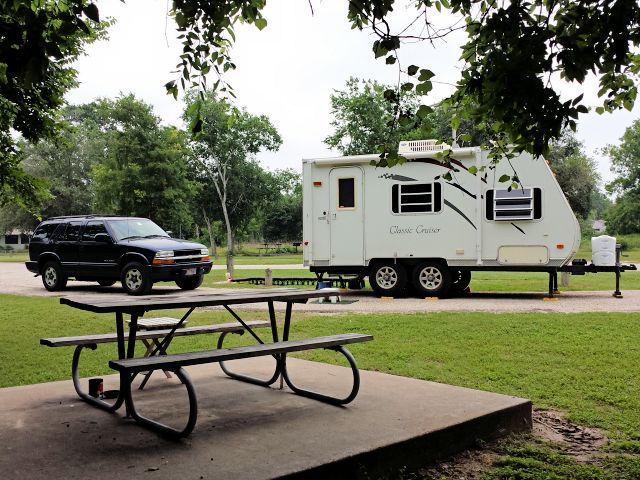
Our campsite was perfect; level, grassy and overlooking a wooded area (behind the camera). Full hookup, of course, plus free wi-fi. We never had any close neighbors as the park had few visitors this time of year.
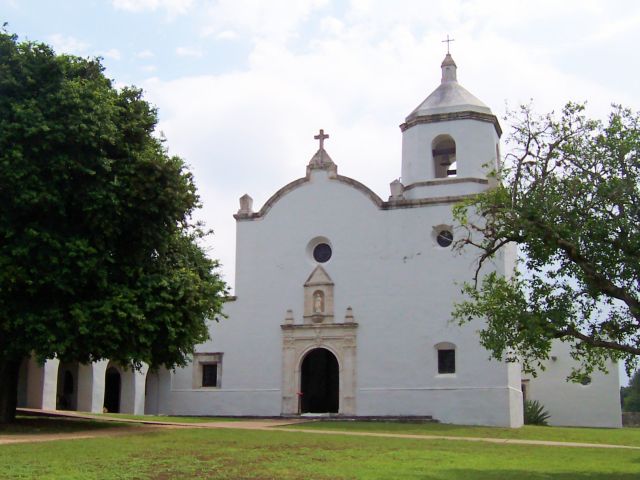
Our first historic site was the Mission Nuestra Senora del Espiritu Santo de Zuniga, actually in the state park. This Spanish mission was built on this site in 1749 after three other locations. The Franciscan's ran the mission until 1830. By 1931 it was falling apart. Crews from the CCC worked to restore it from 1935 until 1941.
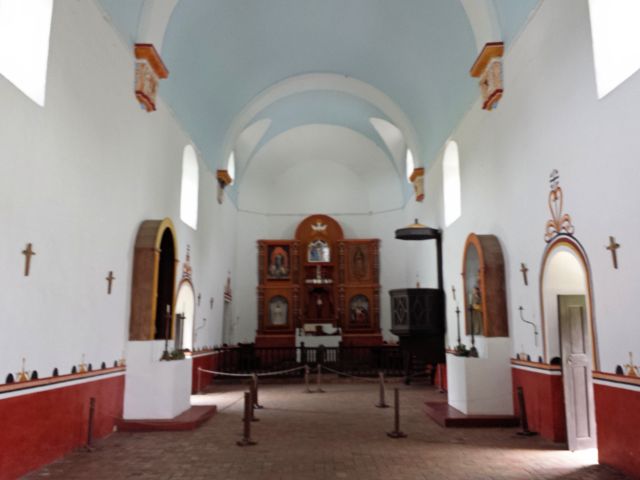
In 1970 Texas Parks and Wildlife rehabilitated the chapel. It's no longer used as a church. At the same time TPW also built historical exhibits in the restored granary which is next to the church.
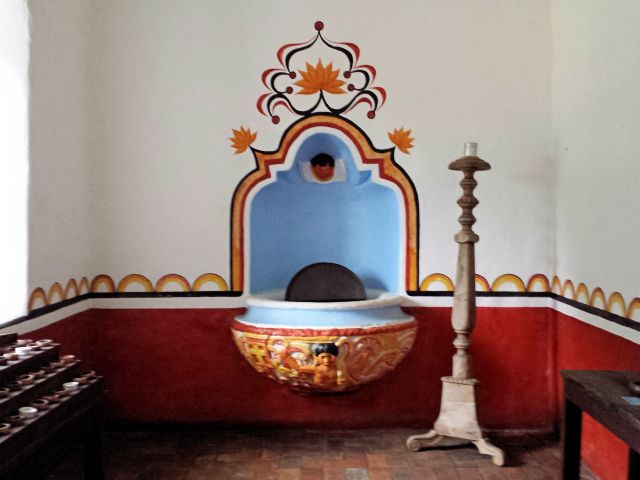
Part of the chapel restoration was this colorful baptismal room.

After visiting Mission Esprito we had lunch and then drove to Presido La Bahia. This is a fort established in 1721 on the coast. It was relocated twice ending up here at La Bahia, which was the original name of Goliad.
The fort was in the hands of Texan forces led by Colonel Fannin when the Alamo fell to Santa Anna's army. Hearing this, Fannin led his 300 to 400 men out to join Houston's army in San Jacinto. En route, they were captured by the Mexican forces and returned to the fort as prisoners. A week later, the darkest day in Texas history, Santa Anna ordered them executed.

The presidio's chapel for the soldiers and area civilians was named Our Lady of Loreto and has been in use since the 1700s. It still is used as a church today.
When Fannin's troops were captured they were held here in the chapel until their execution.
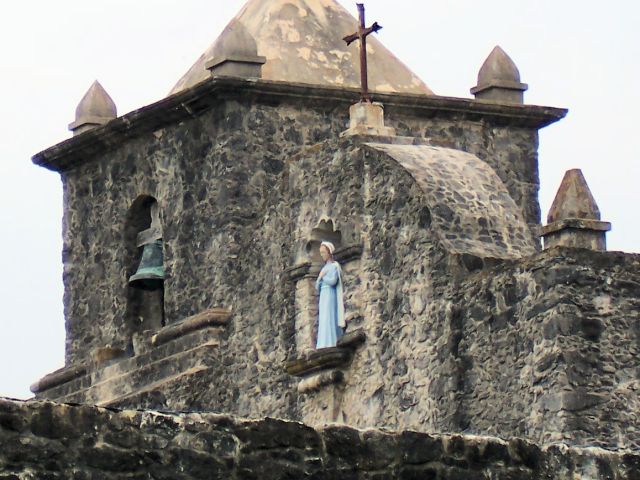
The statue above the doors of the church is of "Our Lady of Loreto". It was sculpted by Lincoln Borglum who, with his father Gutzon Borglum, carved the faces on Mount Rushmore.
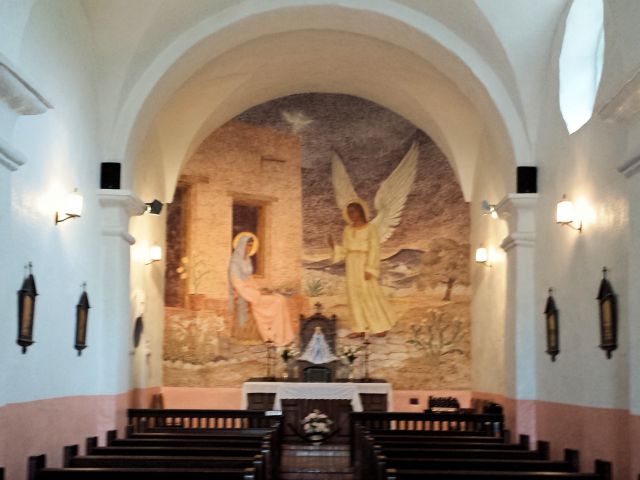
The chapel, complete with pews, is still in use by residents of the surrounding area. The fresco behind the altar was done in 1946 by Corpus Christi artist Antonio Garcia.
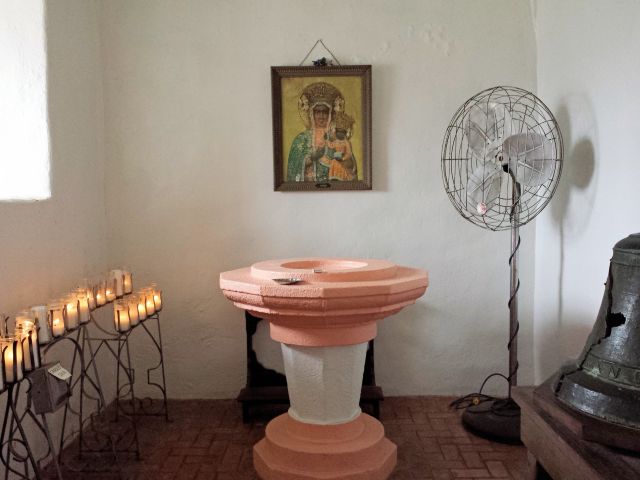
Like Mission Espirito, this chapel has a baptismal. That electric fan in the corner is needed as the baptismal is occasionally used and it gets hot in south Texas.
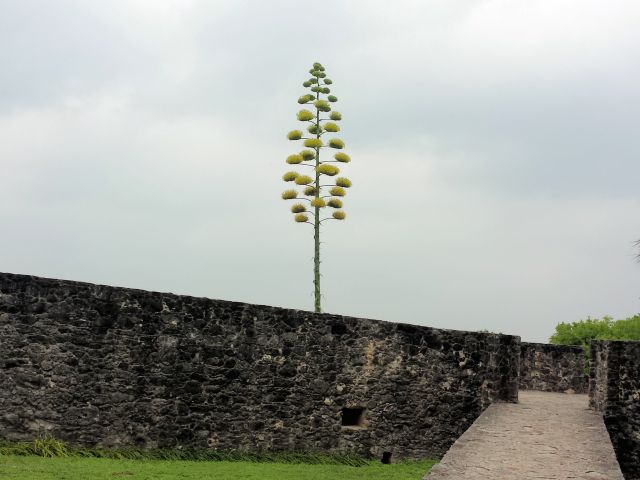
From inside the presidio quadrangle we could see this Century Plant in bloom. We've only seen them before in far west Texas and this surprised us. It doesn't really take 100 years to bloom. It just seems that way. And once the plant blooms it dies.

From the presidio a walkway leads to the Fannin Burial grounds. Half way there is this statue dedicated to "The Angel of Goliad", Senora Francisca Alavez. As the wife of an officer in the Mexican army, she pleaded for the lives of the Texan prisoners and directly helped save the lives of at least 28 from death.

The walkway continues to the Fannin Memorial Monument which marks the burial site of Fannin and his men. The bodies were dumped in this field but after the Mexican army left local residents gave them a proper, although mass, burial.

This small reconstructed building, just across the driveway from the presidio pre-dates the battle of Goliad and even Goliad itself. It's the birthplace of General Ignacio Zaragoza in 1829, when this settlement was called La Bahia.
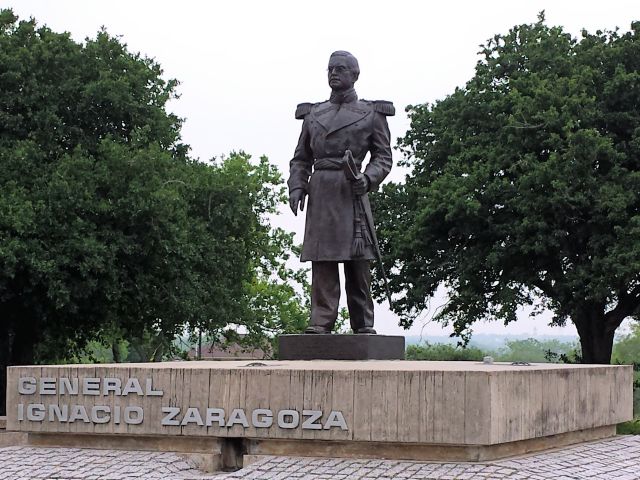
On May 5, 1862 Zaragoza and his under-manned and ill-equipped forces defeated a much larger and better armed French force near Puebla, Mexico. It's the reason for the holiday, Cinco de Mayo. Later the citizens of Puebla donated this statue near Zaragoza's birthplace. Behind the statue is an amphitheater where Cinco de Mayo and other celebrations and events take place.
After our visit to La Bahia we drove back to camp and rested. That was a lot of walking! Later in the day we tried our hand a geocaching, finding a hidden cache with only the co-ordinates and a small clue. We found the one in the park, although those in state parks here are fairly easy. We broke camp the next morning and headed home, stopping on the way at our last history site, Fannin Battleground State Historic Park.

The Fannin Battleground State Park is small and mainly marks the site of the battle, named the Battle of Coleto Creek for a nearby stream. An early marker consisting of a 10 foot cotton gin press screw was placed in the ground were most of the battle debris was found. Later the 10 acre site was donated to the state, improvements were made and a monument was erected. But the original gin screw marker is still there.
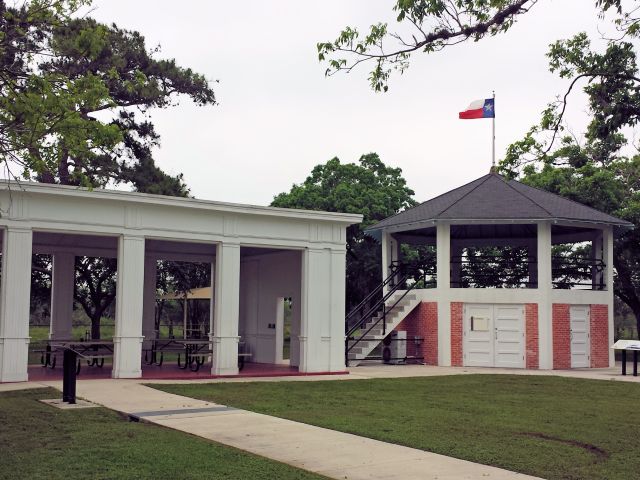
The park has a pavilion, picnic tables and restrooms. Also, in the first floor of the pavilion is a small museum with artifacts and explanations of the battle. Most interesting was an electric display map with lights showing the positions of the forces at different times of the battle.
From the Fannin Battleground we headed home with a stop for lunch at a rest area near Victoria and gas at Ganado. We got home ahead of the rush hour. We're always glad when things work out that way.